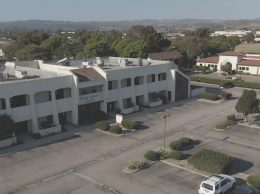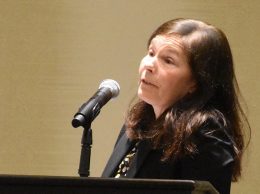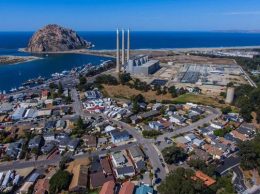Region’s wind future up in air as Acciona exits
IN THIS ARTICLE
- Green Coast Topic
- Patrick Kulp Author
By Patrick Kulp Friday, August 2nd, 2013
A Spanish firm is giving up on plans to build the first and only major wind energy project in the region, casting doubt on whether turbines will ever twirl over the Tri-Counties.
In July, Acciona Energy North America said it is abandoning plans to build a 3,000-acre wind farm near Lompoc. The Spanish renewable energy and construction company was slated to build up to 65 wind turbines on the hills next to Vandenberg Air Force Base.
Acciona, which now faces a struggling economy at home in Europe, was the first company to attempt a major wind project in the region. And it may also be the last, experts said. Tough permitting processes, high land prices, a delicate coastal ecology and lack of high-voltage power infrastructure all make the Tri-Counties an unlikely home for big wind farms, several experts told the Business Times.
Officials in Ventura, Santa Barbara and San Luis Obispo counties all told the Business Times there were no large-scale wind power applications being pursued at the moment. But some people with knowledge of the wind industry think smaller projects could succeed, and environmental groups are also investigating the viability of offshore projects.
Here’s a closer look at Acciona’s decision to pull out and what it means for the future of wind power in the region.
Years-long struggle
Three months before Acciona announced its pullout, the Santa Barbara County Planning Commission had granted Pacific Renewable Energy Generation LLC, the Acciona division in charge of the Lompoc Wind Farm, a two-year extension on its land use permit. The project had been in the works since 2006, but several lawsuits bogged down the process. And last year, market uncertainty about whether the federal government would renew a critical wind tax credit also played a role.
Acciona North America marketing and communications manager Peter Gray said in an emailed statement that although the site has strong potential, the company needed to re-focus its resources toward its other projects.
Santa Barbara County energy specialist Kevin Drude said the company has not yet officially surrendered its permit but has announced its intentions to do so. Once it does, Drude said, the space will be open for other developers to apply for the permit and restart the project.
While Acciona has not given a specific reason for its withdrawal, Drude speculates that the decision had to do with declining renewable energy markets in Europe that have hurt the company financially. Drude said the project was the closest the county has ever come to having wind energy plant, and he was disappointed that it fell through.
“The county was in full support and thought it was well-planned and well-mitigated,” Drude said. “It was a good try, and it will be interesting to see if someone else comes in after them.”
Drude said that if a new company was to attempt to take over the project, it would essentially have to start over at square one with the permitting application process. However, any future developers will have the added advantage of access to the extensive documentation and research that has already been done for the area, he said.
Political headwinds
Despite good wind resources in the region, companies aiming to develop large-scale projects face many expensive hurdles.
Tam Hunt, principal of Community Renewable Solutions, a Santa Barbara-based consulting firm, said getting proper permitting is the biggest obstacle in the way of wind power projects.
“[Santa Barbara County is] known for being extremely hard to permit energy projects, including renewable energy projects, so this recent failure doesn’t bode well for attracting developers to our county, unfortunately,” Hunt told the Business Times in an email.
Hunt said large-scale projects are challenging in the area, but his firm is currently working with a few medium-scale projects and he hopes the permitting process will be less daunting.
Santa Barbara-based Infinity Wind Power CEO Matt Riley said his company does the bulk of its development in the Midwest, where permitting is much more lenient. He said the absence of wind power development in the region is due to a combination of lack of infrastructure for turbines, strict permitting, steep land prices and an abundance of environmentally sensitive areas.
Solar and offshore wind
Riley said solar power is actually a much more viable renewable energy option for the region because solar projects typically take up a much smaller space than wind farms and are much less obstructive to views.
Solar power has seen much more success in the region with several new solar installations popping up across the Tri-Counties in recent years, including a site near the Santa Barbara County Jail and a proposed project in the isolated Cuyama River valley. “It’s all about scale. The scale of the Lompoc Wind Farm was so much greater than any other solar project that you would see in the county,” Riley said.
Community Environmental Council energy programs manager Megan Birney said many renewable energy companies are starting to look to offshore wind power as the future for development in the region.
The CEC and Infinity are currently working with UC Santa Barbara’s Bren School of Environmental Science and Management on a project assessing the permitting viability and potential community reactions to offshore floating wind turbines.
Birney said such technology has seen success in Europe but has yet to catch on in the United States. She said offshore turbines are more efficient because the winds are stronger and more consistent further from the coast.











